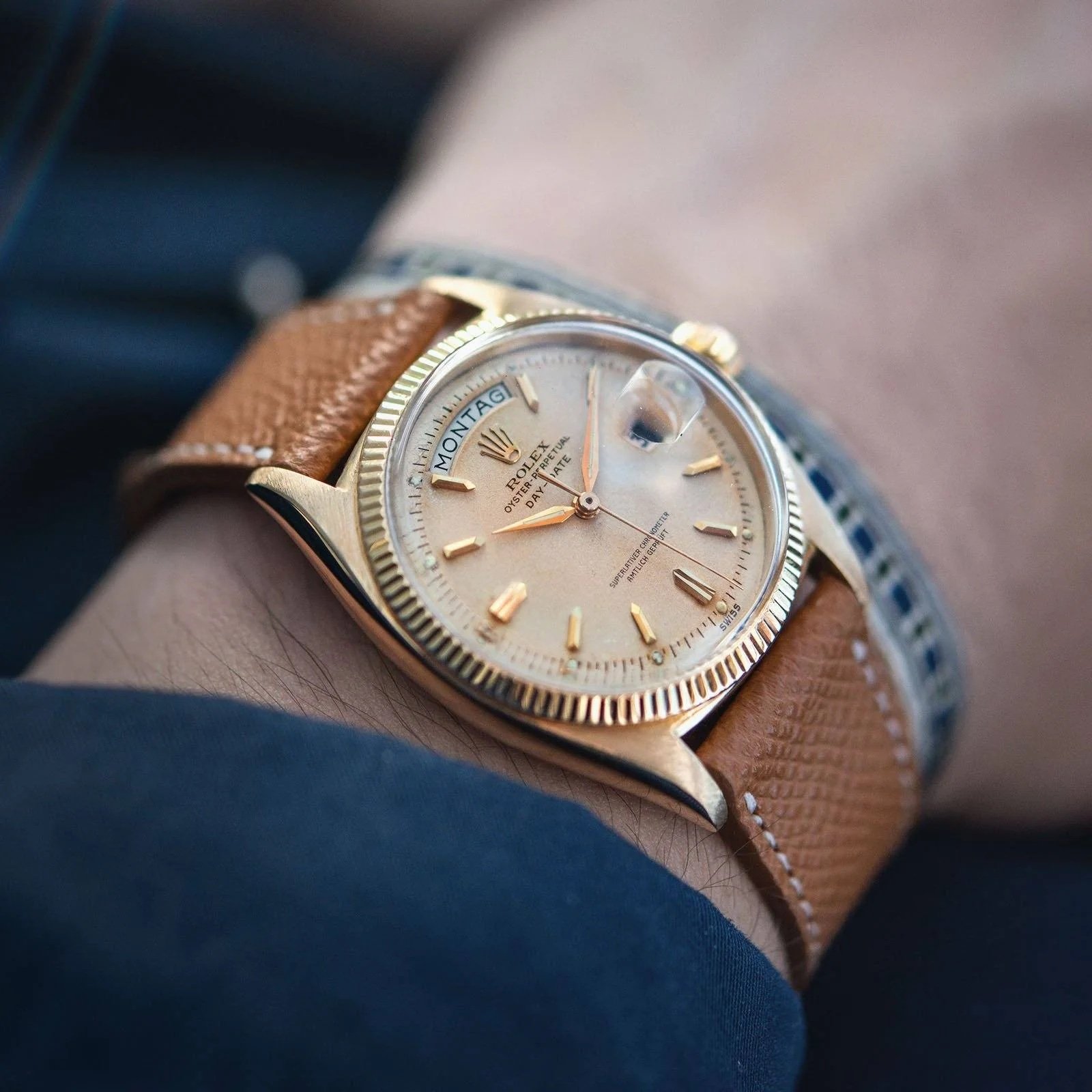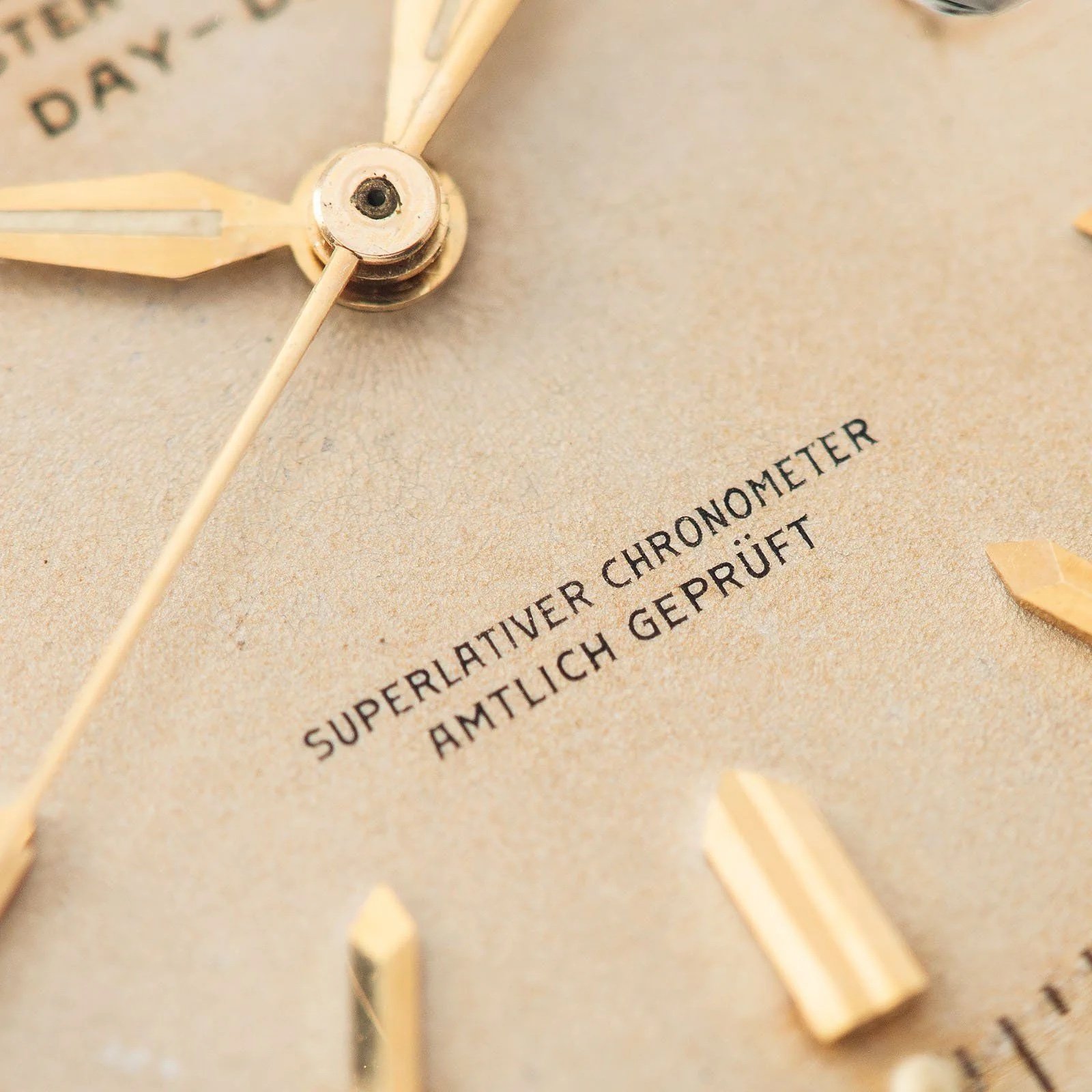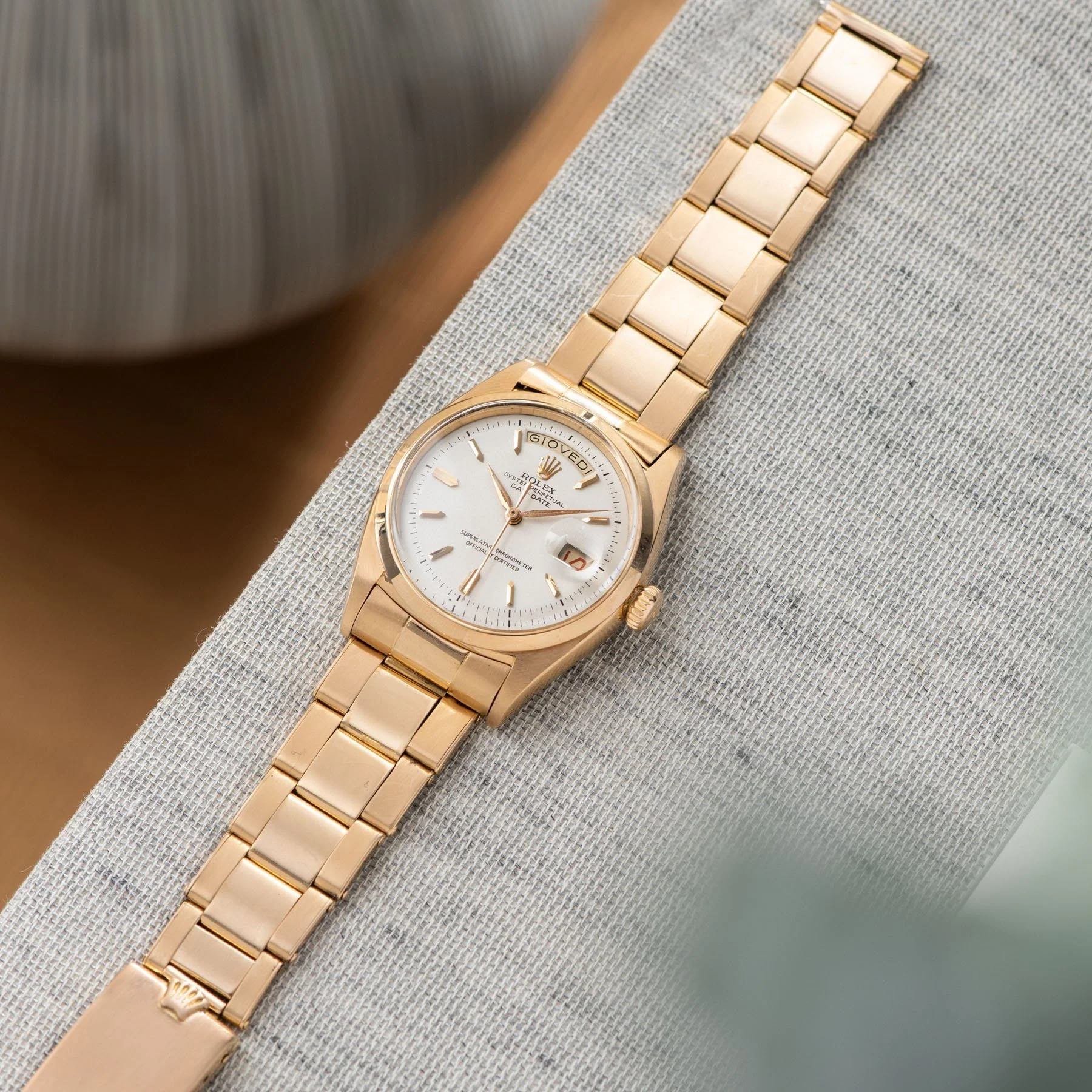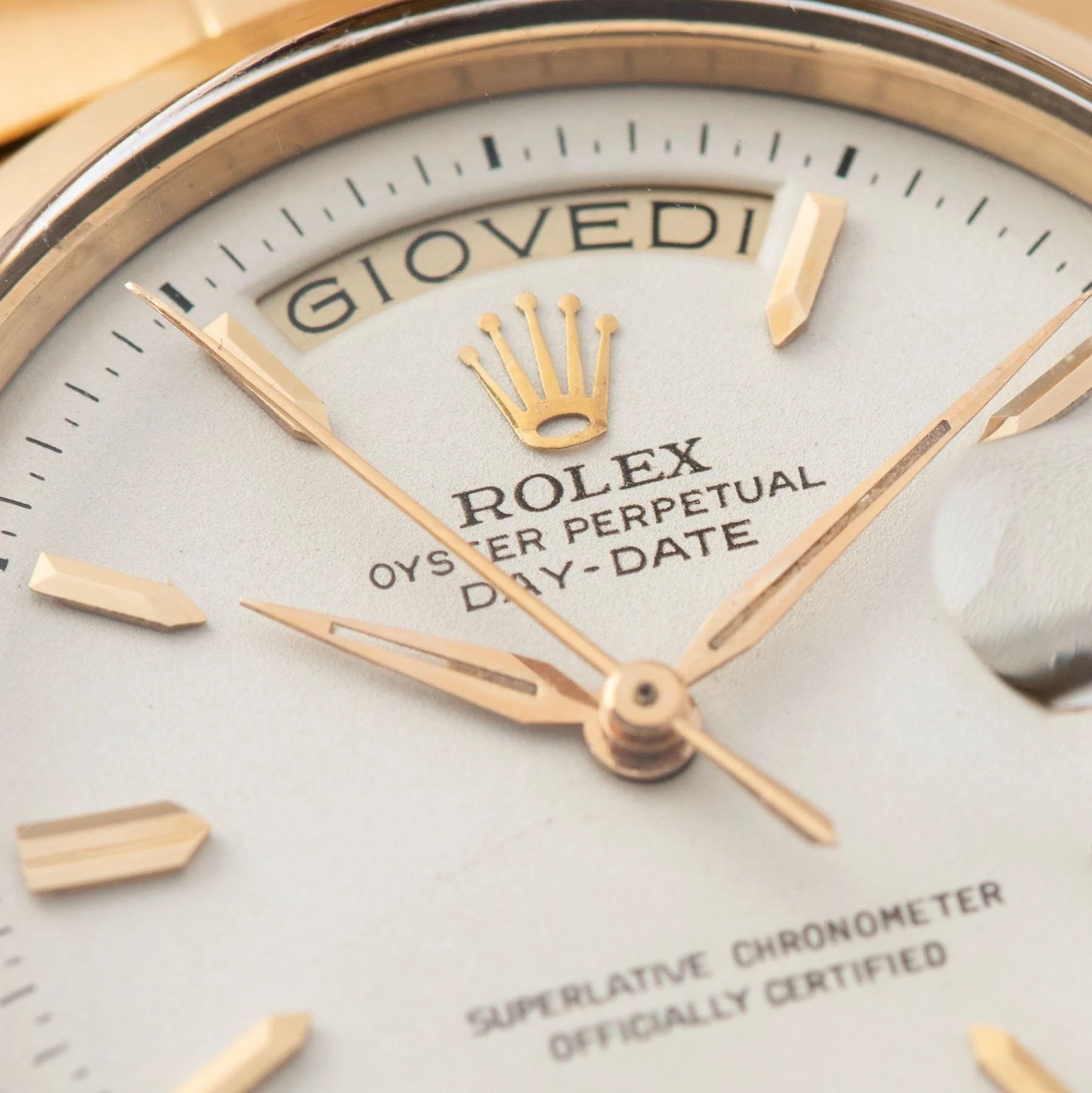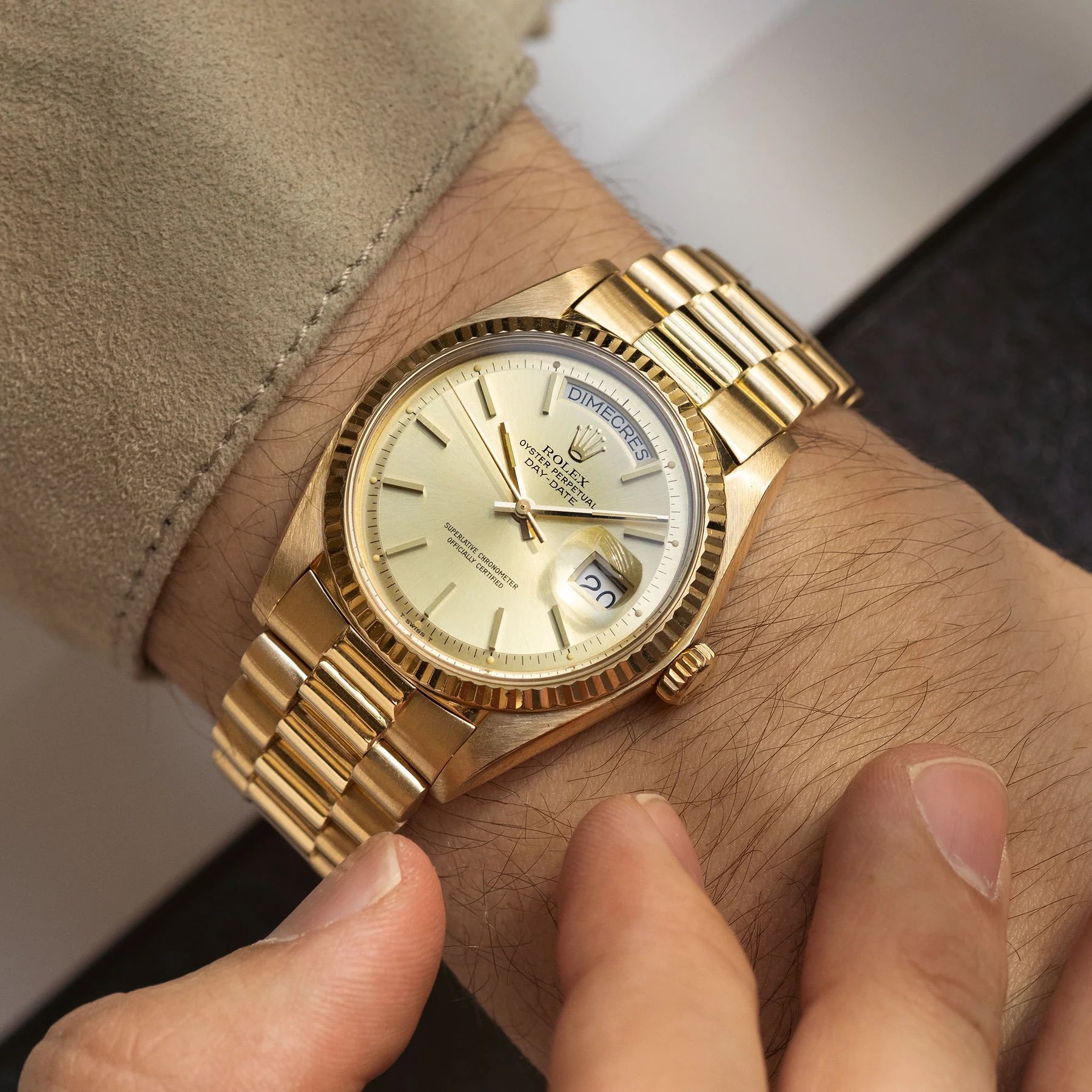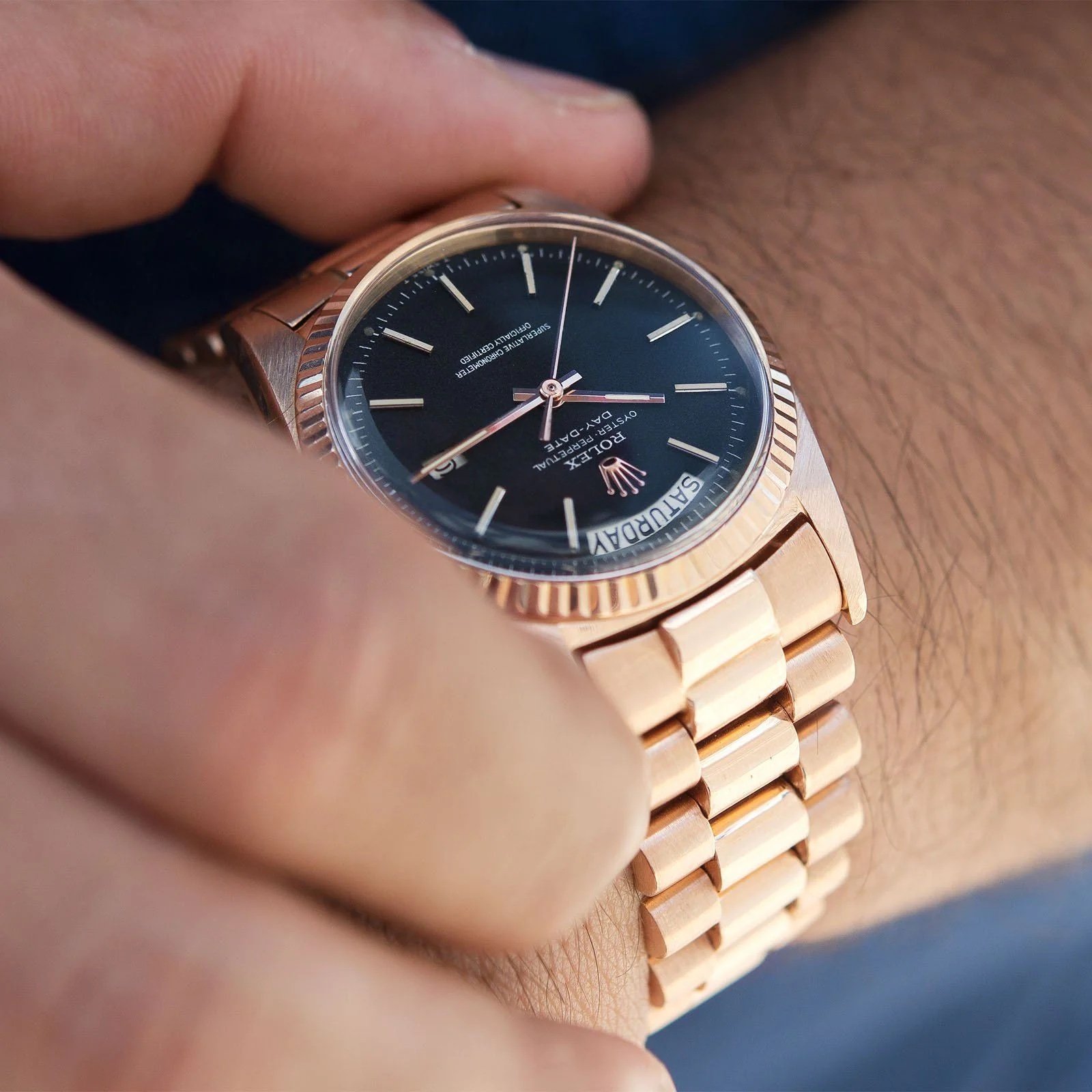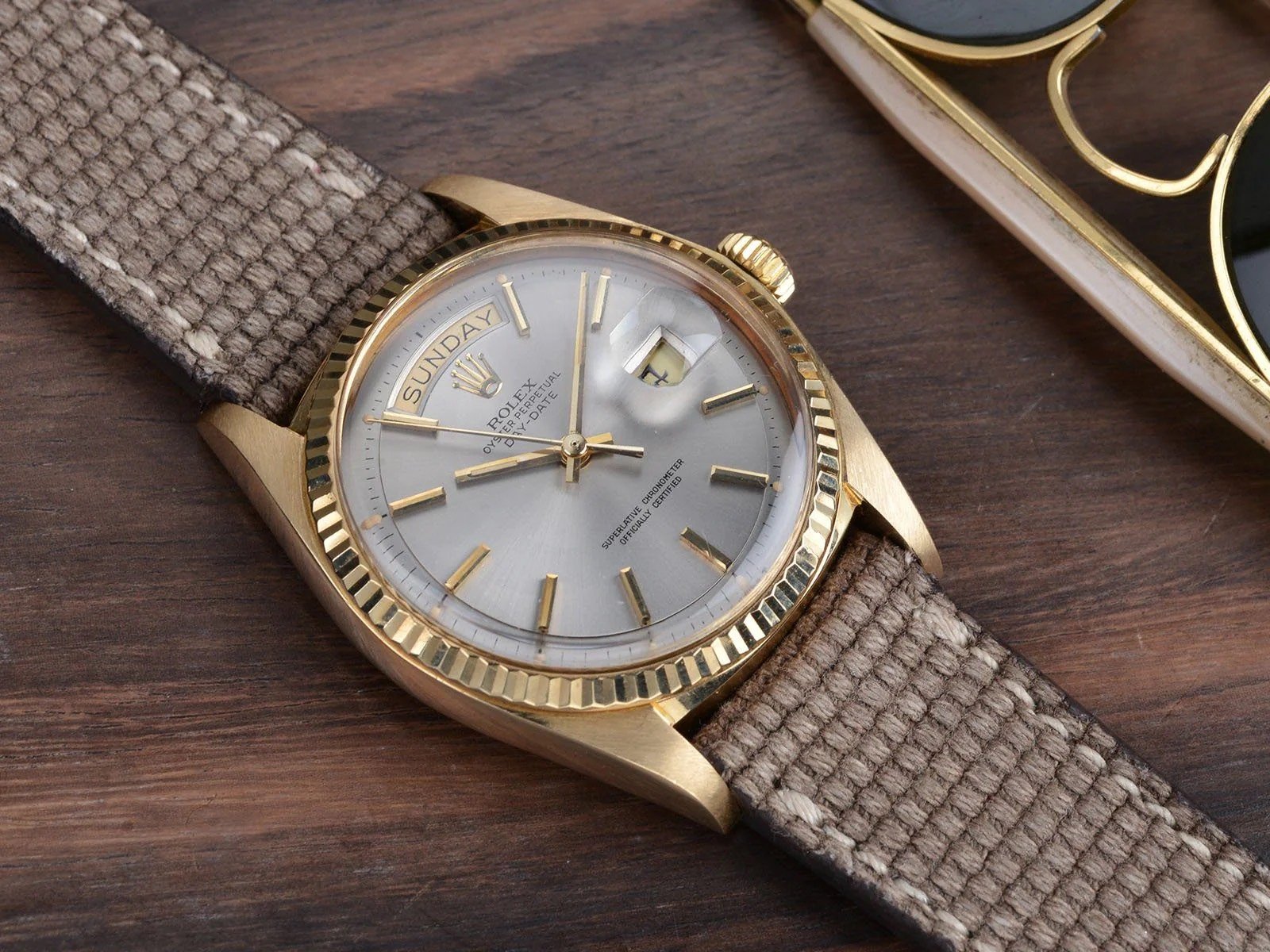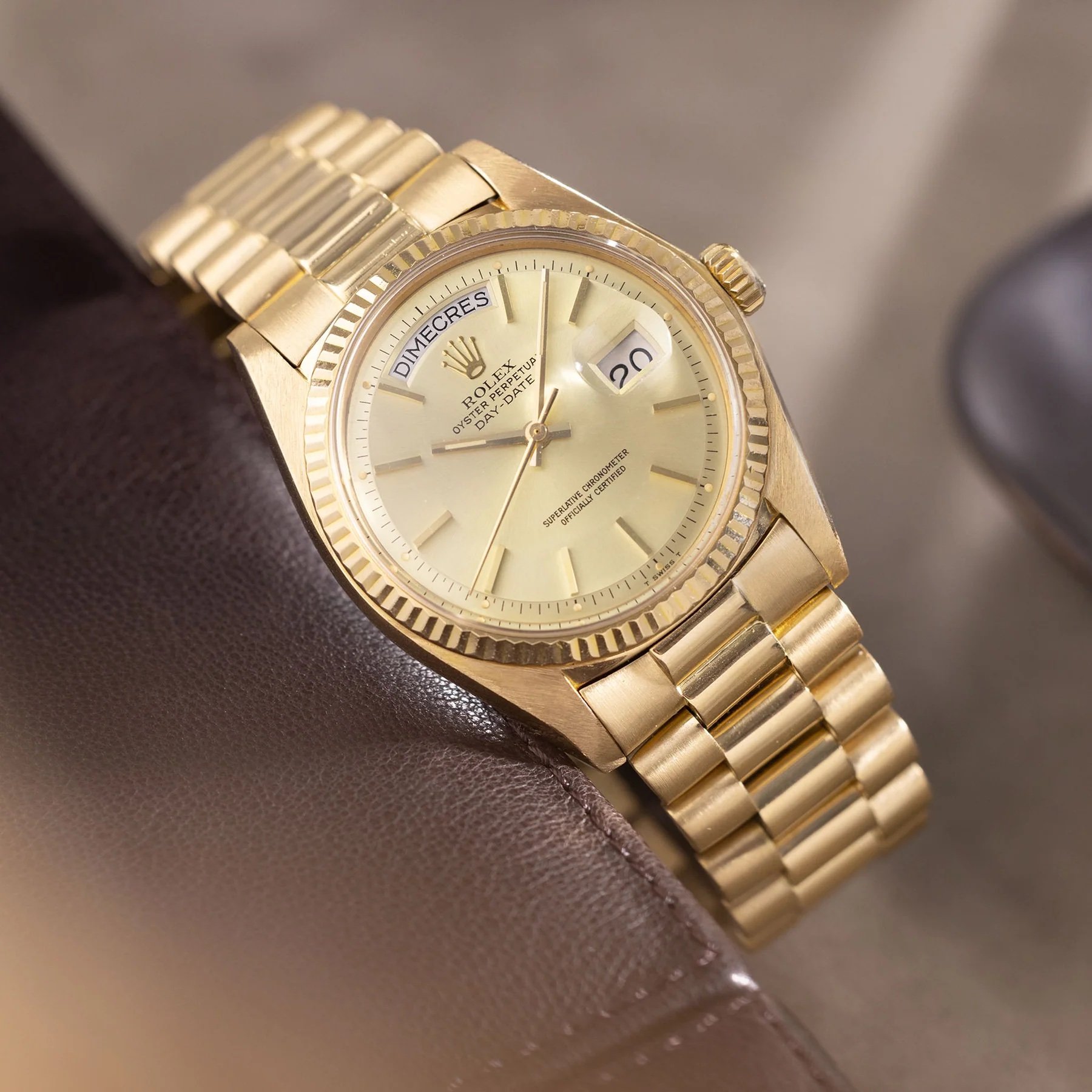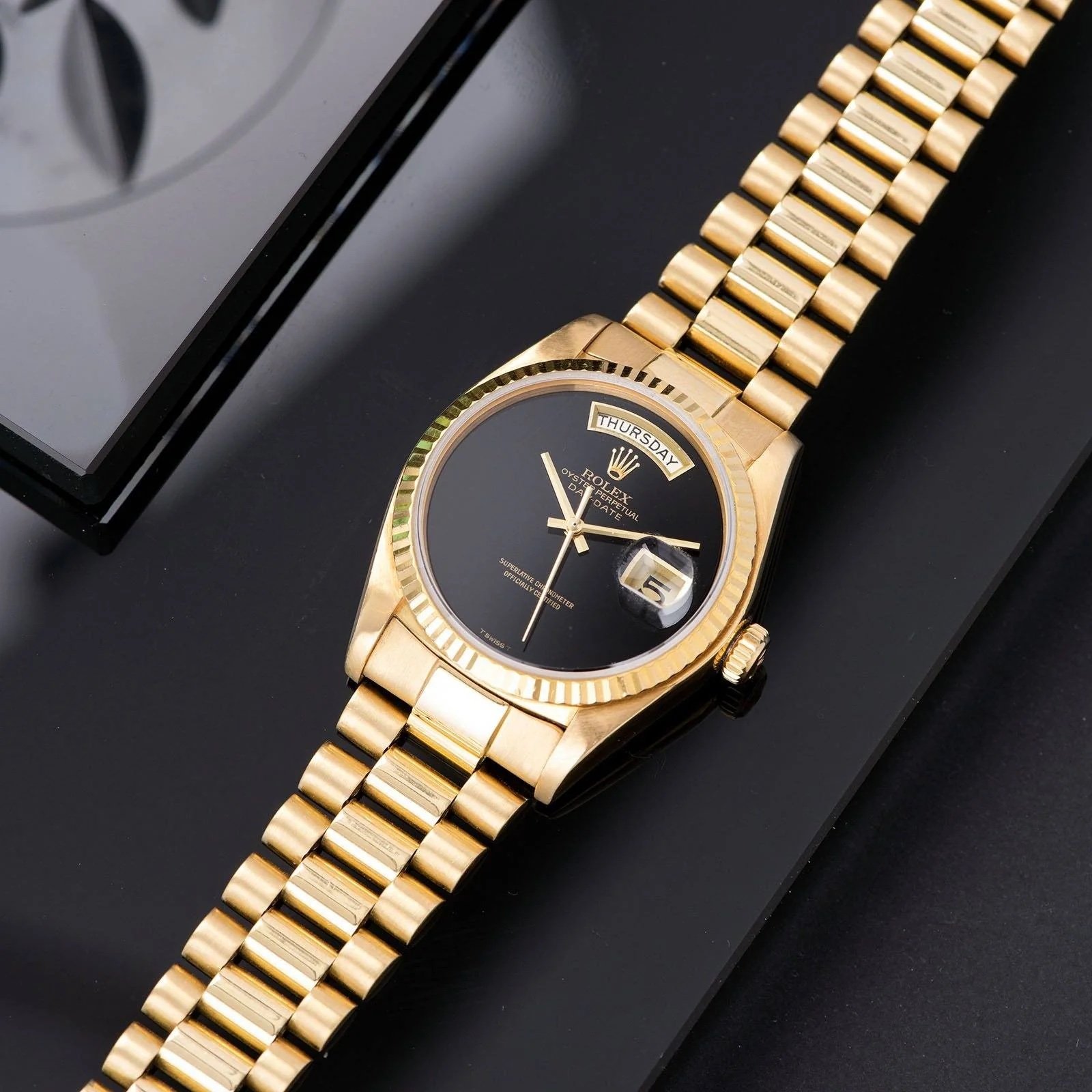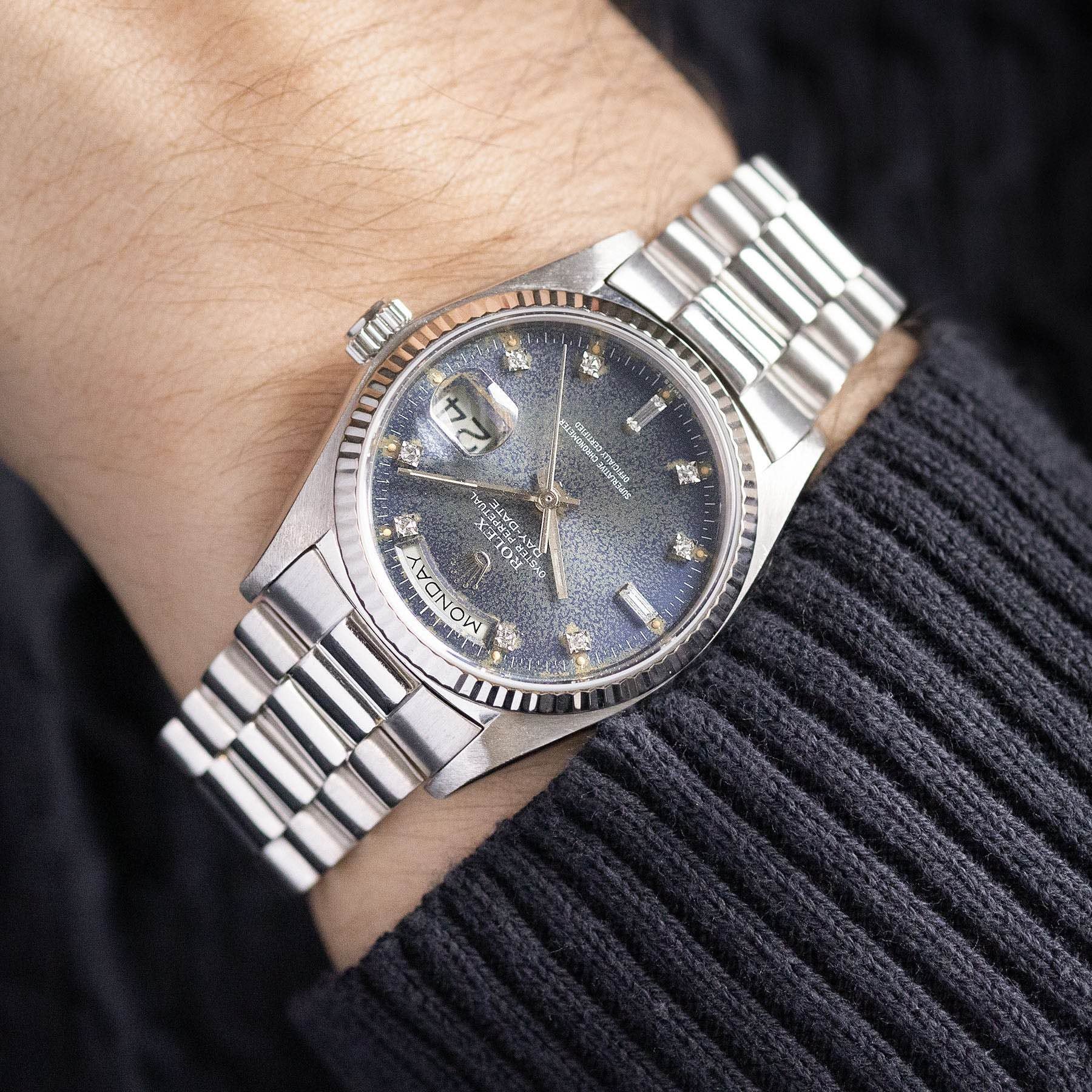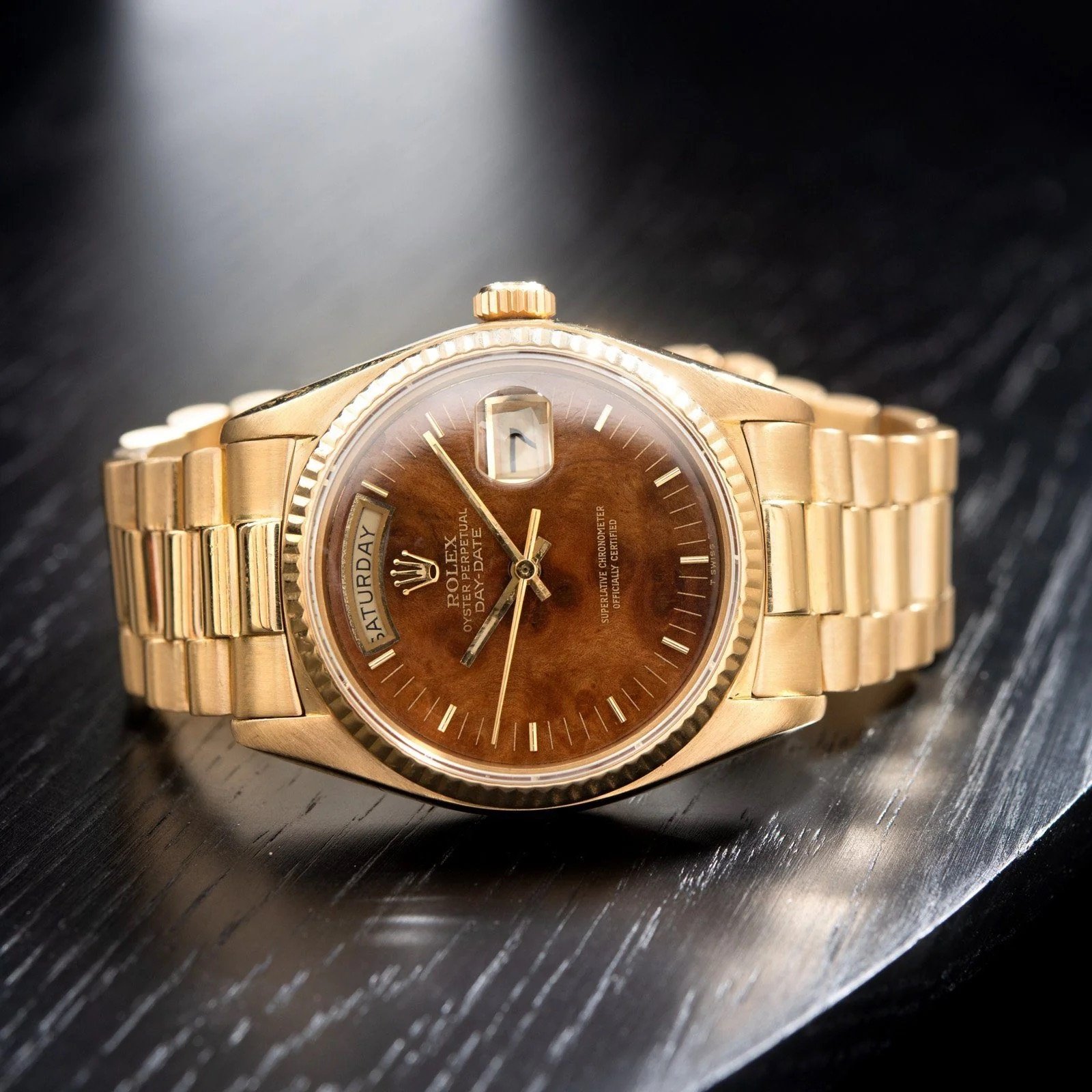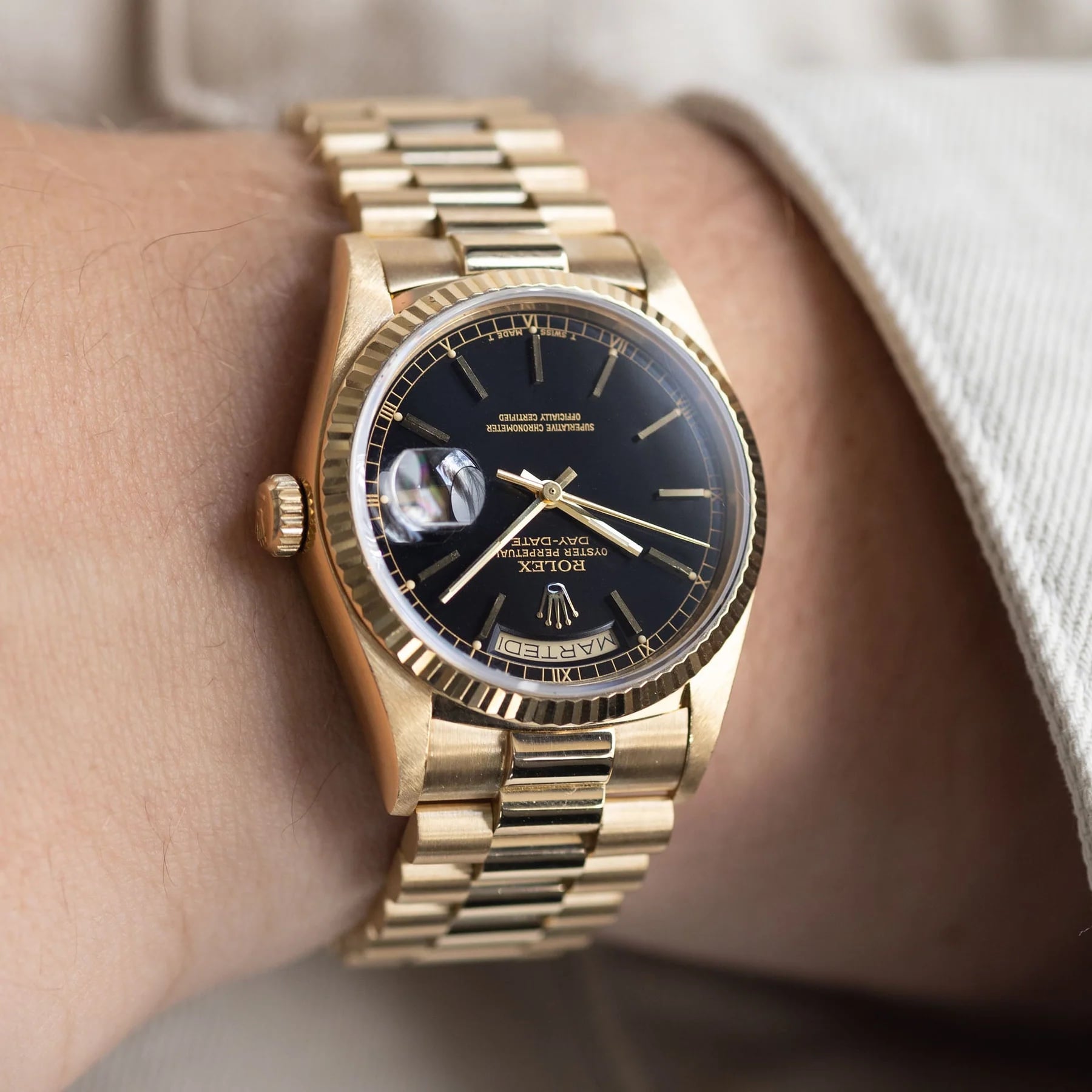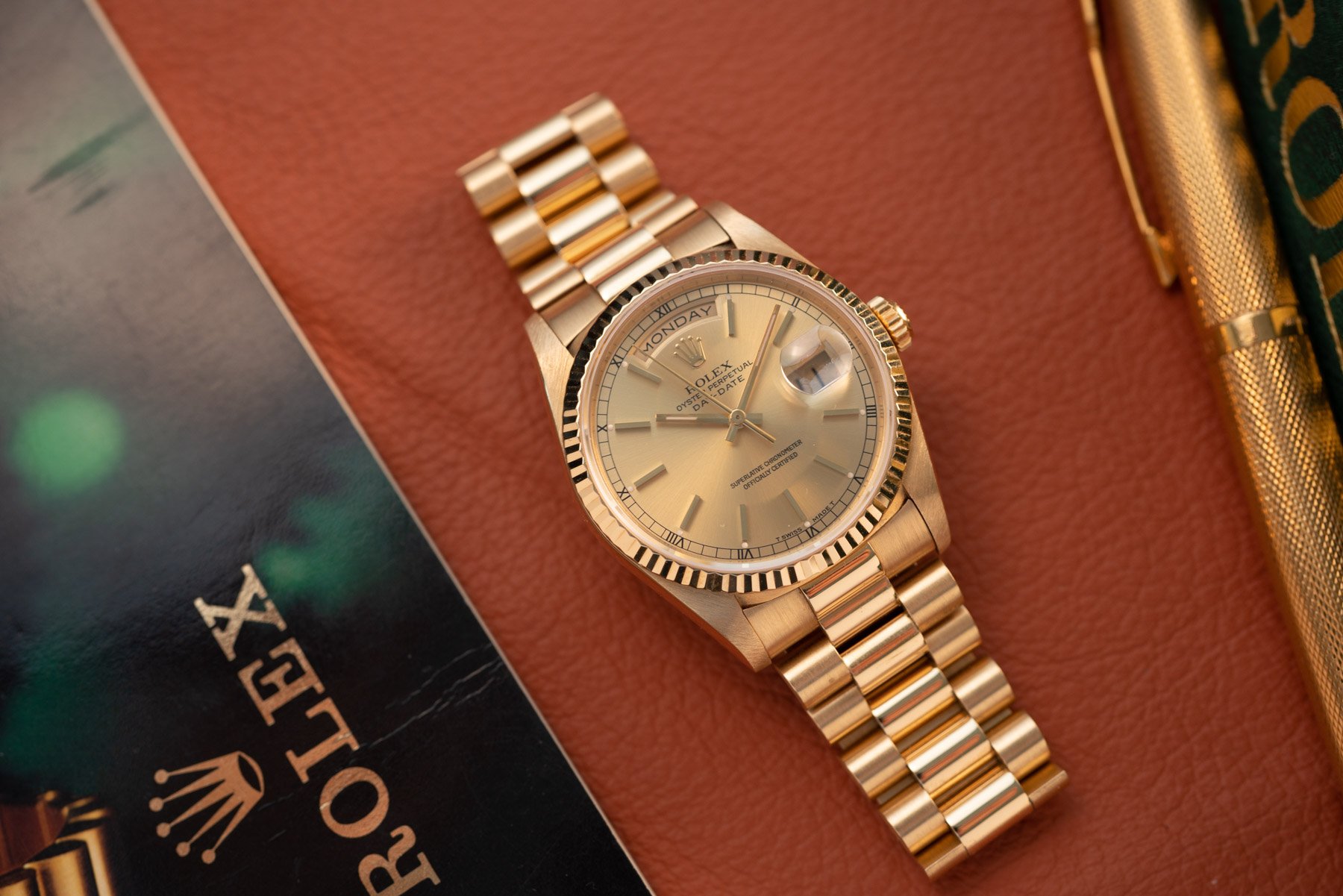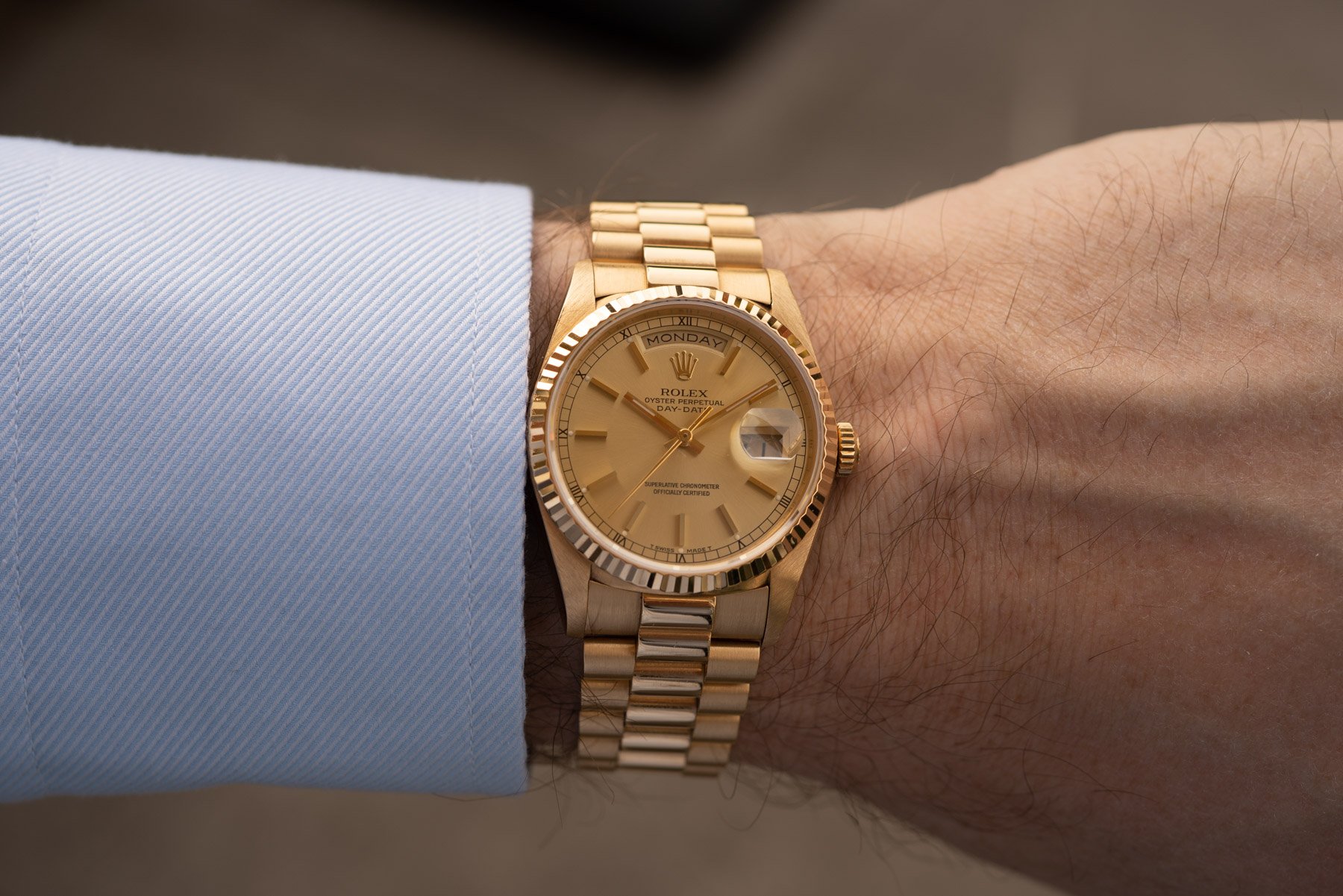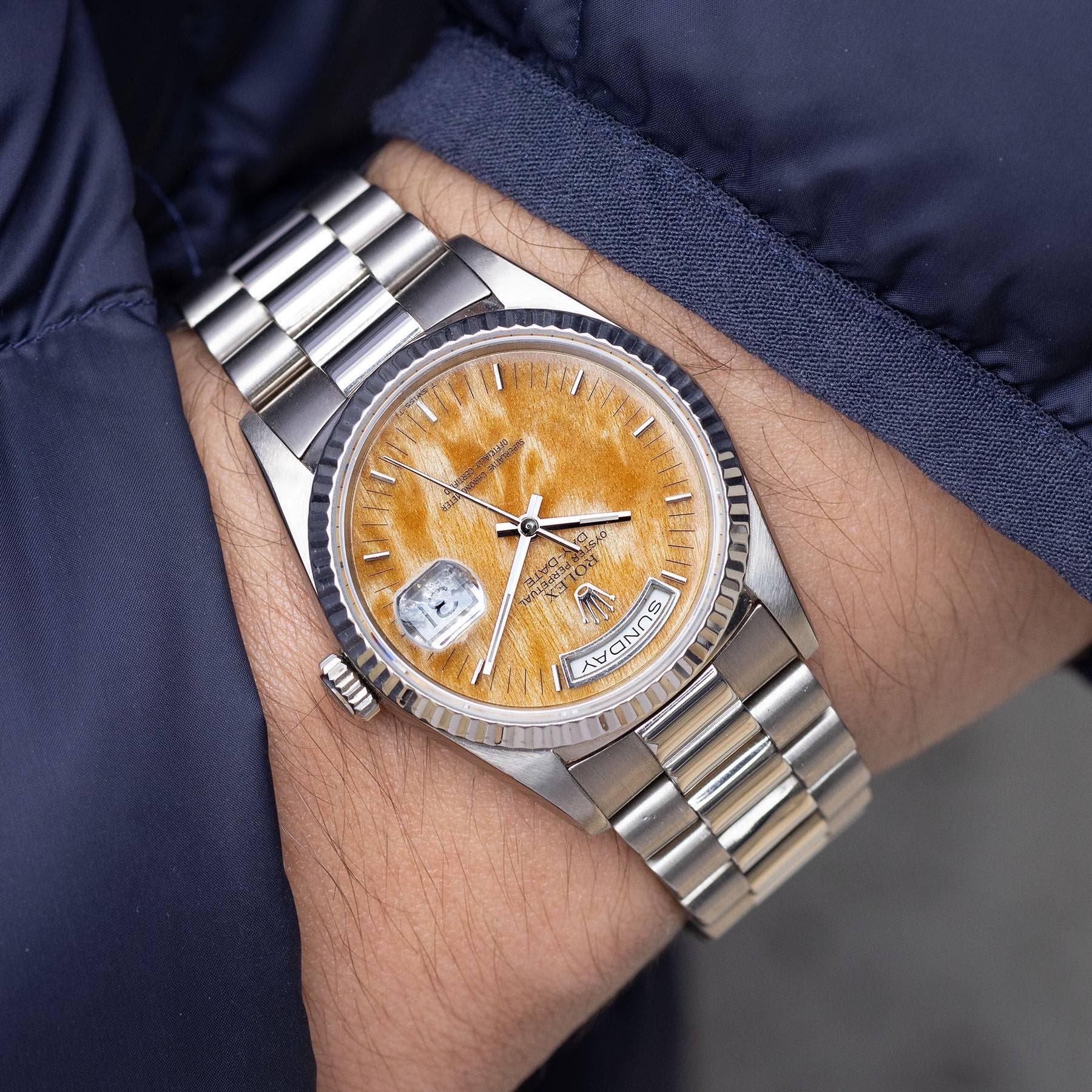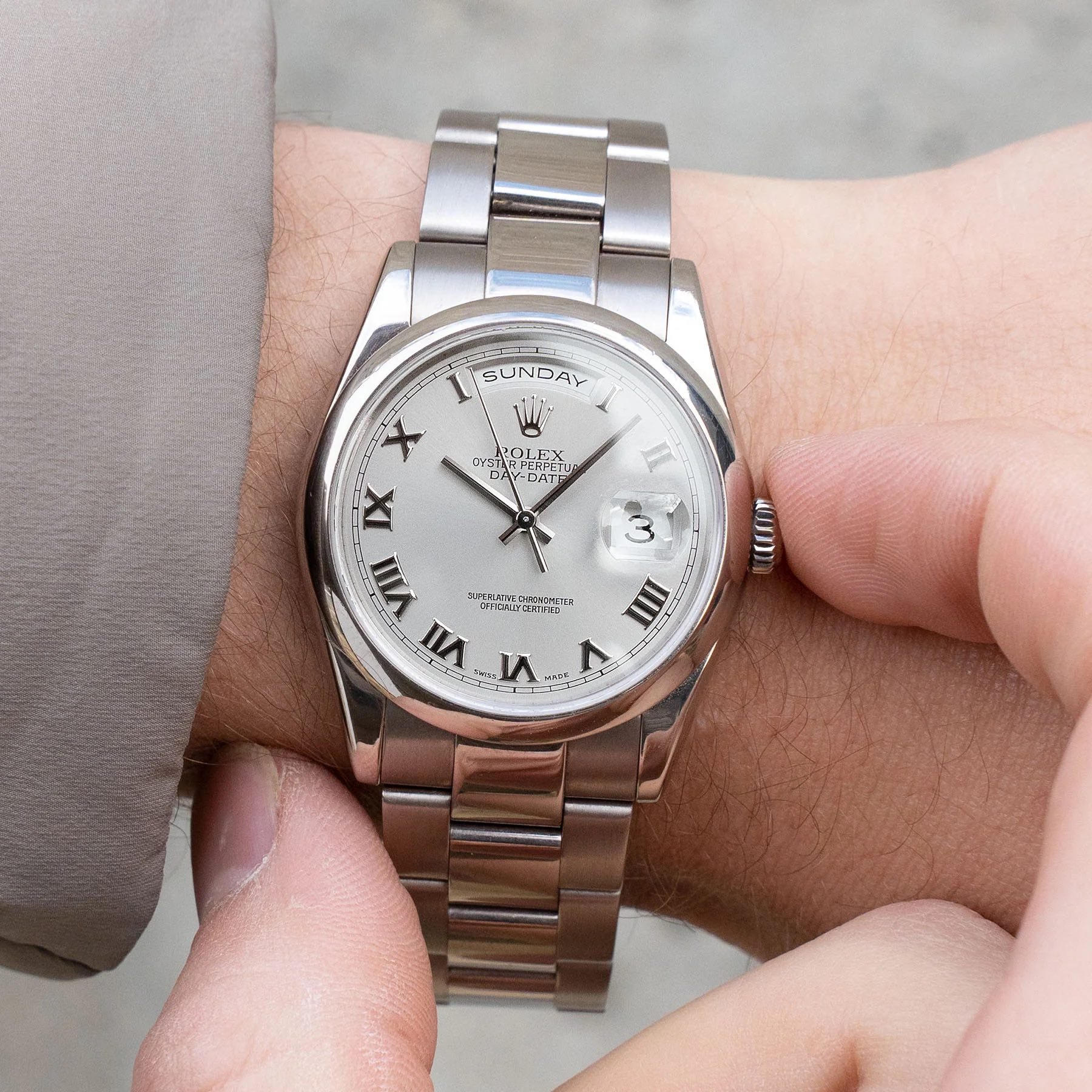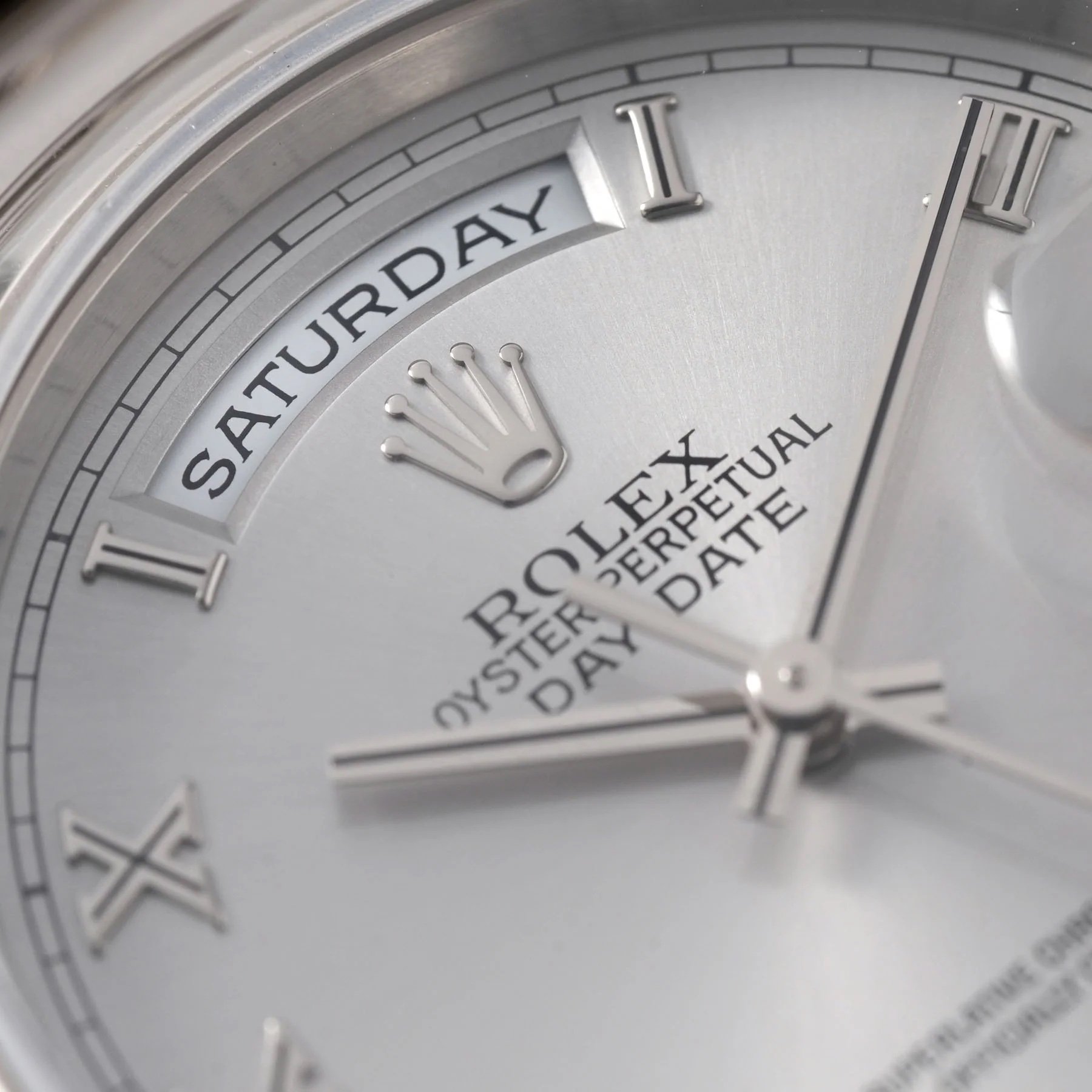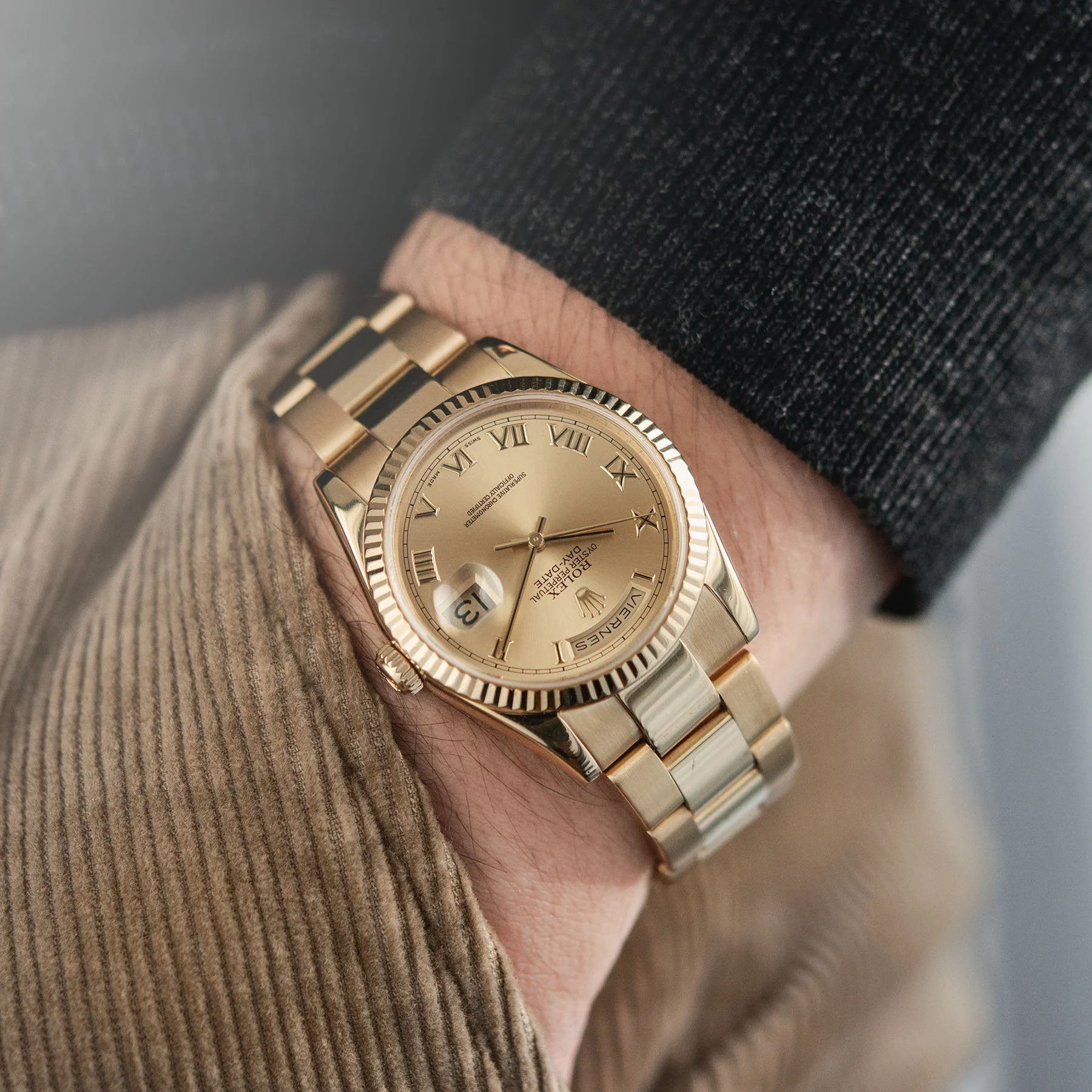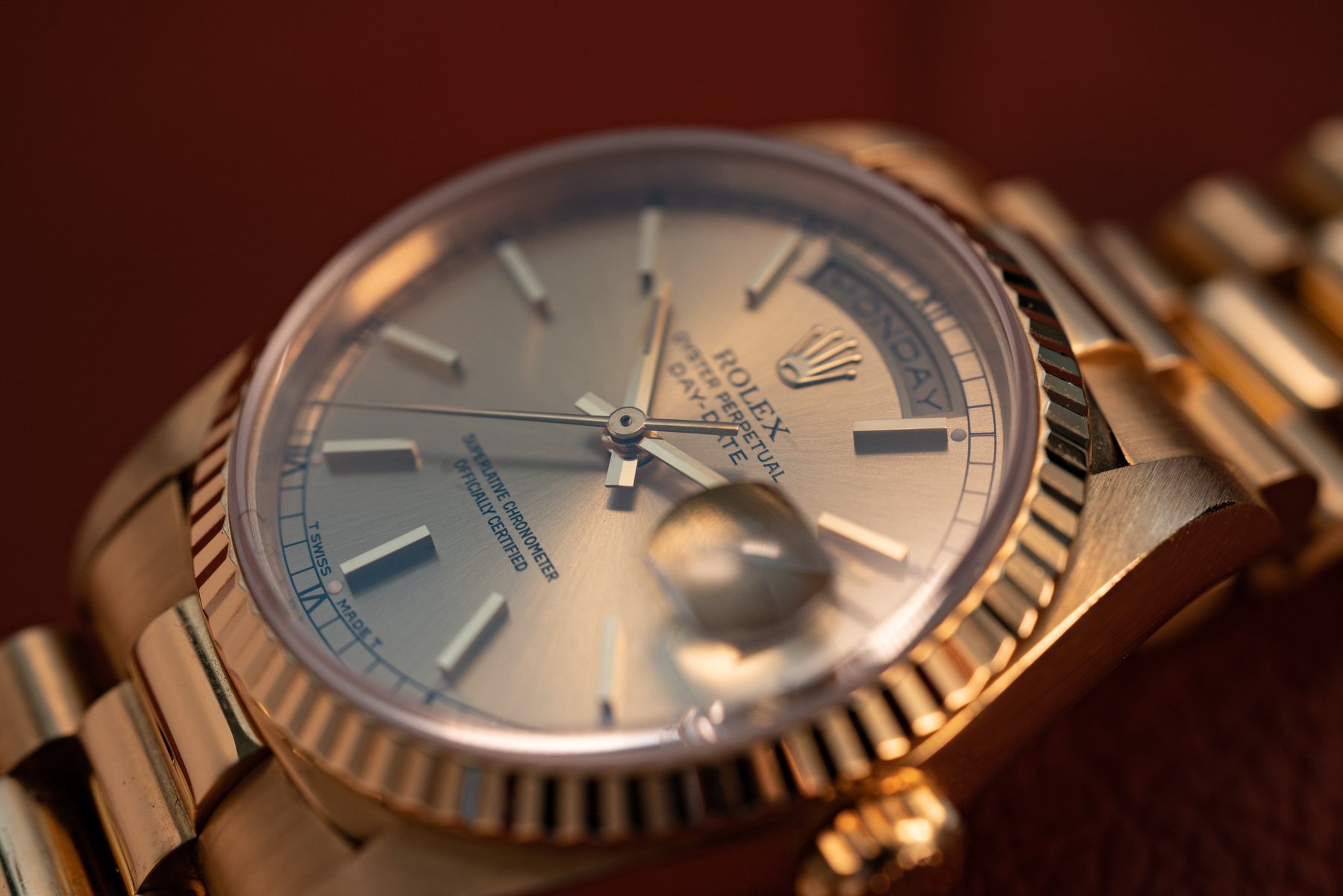Fratello’s Top 5 Rolex Day-Date References Ever Created
Another Friday, another Top 5! In this series, we take one classic watch and choose our five favorite references ever produced. Four of these references will be based on the historical importance of the specific watch in the grand scheme of things. Though there may be some overlap, it’s not a question of which references are the most collectible or of the highest value on the market. The fifth pick is our Fratello favorite that considers the current market price and collectability, potentially making it a sleeper reference. As such, the last pick could be described as our wild card. This week, we’ll take a look at the Rolex Day-Date. We have selected what we believe are the best five references of Rolex’s absolute ultimate in luxury watchmaking.
The Rolex Day-Date has been the epitome of luxury from the Geneva brand ever since the first reference debuted in 1956. No other watch oozes the same classy style in full gold as the Day-Date. When it was first introduced, the Day-Date became Rolex’s new flagship model. The watch was only available in 18K gold (white, yellow, and rose) and platinum. On top of that, the first self-winding, chronometer-certified model was “waterproof” and sported that typical day indication at 12 o’clock and date indication at 3 o’clock. This specific way of displaying the day and date is the standout feature of the Day-Date. And almost seven decades later, the Day-Date has not changed all that much in appearance. Its reputation, however, has grown, turning it into one of the foremost luxury watches of all time.
Rolex Day-Date ref. 6611
With the Day-Date, you have the same “issue” as with last week’s Datejust list: there are different references within the same generation of models. So despite using specific references for this list, it’s mainly about the different generations when it comes to technical updates. We’ll start this list with not the first but the second reference of the Day-Date.
As I explained in the Buying Guide article about the best Rolex watches from the 1950s, the first Day-Date models that Rolex introduced in 1956 were the ref. 6510 (domed bezel) and ref. 6511 (fluted bezel). These are incredibly hard to find because they were only produced for a year. The biggest flaw was the movement because it didn’t build up enough power reserve to switch to the next day at midnight.
That’s why Rolex introduced the ref. 6610 and ref. 6611 in 1957 with an updated version of the caliber 1055, which featured a free-sprung balance with micro-stella adjustment. While I picked the ref. 6611, the pink gold ref. 6612 with the smooth bezel that you see in the picture above is equally impressive. Still, I find that a Day-Date should be yellow gold with a fluted bezel, but it’s not necessarily the only traditional configuration. The Day-Date ref. 661x models were in production until 1959 when they were replaced by the first of the famous Day-Date 1800 series. Design-wise, there are some differences, the main one being the handset and the markers.
A different aesthetic but still very much a Day-Date
The old aesthetic for the Datejust and the Day-Date famously featured a pie-pan dial, Alpha hands, and different styles of indices. Funnily enough, Day-Date models from this generation feature dauphine hands. And there are even dials known to feature German text, as seen in the first couple of pictures. It’s an extra dimension besides the obvious change in language on the weekday disc at the top of the dial. But most of all, the different styles of hands and markers do not hide that this is a classic Rolex Day-Date. Getting this classic flagship model from the brand will set you back between roughly €10K and €20K depending on the condition and whether it comes on a leather strap or a precious metal bracelet.
Rolex Day-Date ref. 1803
Moving on to the second spot, this is reserved for the 1800 series, which succeeded the ref. 66xx models in 1960. With the 18xx references, you get the Day-Date look that we still know today. This means a 36mm case in either white gold, yellow gold, rose gold, or platinum, baton hands and markers, and the famous combination of the month and date indicators with the cyclops for the date.
What stayed was the beautiful pie-pan dials that gave the watch extra depth. Looking at the ref. 1803 in yellow gold, it is everything we know and could want from a Day-Date. But the biggest change compared to its predecessor is not in the looks but in the movement.
Rolex equipped the 1800 series with the new caliber 1555. In 1965, Rolex updated the movement once again to the caliber 1565, which upped the beat rate from 18,000vph to 19,600vph. In 1972, Rolex added a hacking seconds function as well, and in 1978, the 1800 series was followed by the 18000 series. For the 1800 series, we also saw the change from radium to tritium lume in 1963–1964.
During this roughly 18-year production span, Rolex produced numerous dial variations, including the famous Stella dials. Finding a great 1800-series Day-Date for a good price is definitely possible. Expect prices starting at roughly €7.5K and moving up to €100K for a special dial or an original version in NOS condition.
Rolex Day-Date ref. 18038
Now we move on to the next generation of the Day-Date that was introduced in 1978. The 18000 series proved to be another important step in the development of the watch. It was the first series to feature sapphire crystals rather than the acrylic crystals from the previous generations. Additionally, the pie-pan dials disappeared.
Another very significant update was the new caliber 3055, which upped the operation frequency to 28,800vph and featured a quickset function for the date. As most of you will know, it is also referred to as the “single quickset” as you still have to change the month indicator by moving the hour and minute hands.
When it comes to the dials, the 18000 series is an absolute joy to explore. Rolex went wild in the late ’70s and ’80s with some of the most remarkable dials ever produced. They are all spectacular, from the colorful Stella versions to dials in tiger’s eye, black onyx, and even wood. The Day-Date 18000 series stayed in production until 1988 when the 18200 series succeeded it.
But in that decade of production, Rolex showed the incredible variety of the Day-Date, offering it with leather straps, the great President bracelet, and different dials. Of course, the watch came in different precious metals, but you will most often see the 18K yellow gold ref. 18038. If you search for one, you will find prices roughly between €9K and €20K for the “normal” versions. For the different ones with special dials, the prices shoot up to €50K and even €100K easily.
Rolex Day-Date ref. 18238
We now proceed to the Rolex Day-Date ref. 18200 series that debuted in 1988. Rolex once again upgraded the movement to the new caliber 3155. The most important feature of the movement was the double-quickset feature. It allowed owners to change the weekday and date indicators easily.
Therefore, this series offers modern practicality with the classic Day-Date looks, and that’s why many enthusiasts consider buying this reference as their Day-Date. Fratello’s own Robert-Jan owns the yellow gold ref. 18238 that you see pictured. It is an absolutely iconic piece in this configuration.
But it would not be Rolex if there weren’t a wide variety of different versions available. I love the white gold ref. 18239 with the wooden dial in the photo above. The combination of materials in both color and texture is understated yet stunning. But there are also plenty of flashier versions of the 18200 series if you are not scared of the incredible show-off factor that the Day-Date offers. Prices for a yellow gold ref. 18238 start around roughly €14.5K and move up to well over €50K for a unique and colorful dial. But knowing that you can get a ref. 18238 in great condition with the box and papers around roughly €20K is quite a great realization. It’s the only watch you’ll ever need.
Rolex Day-Date ref. 118209
For the last pick on this list, we’ll switch to a white gold version with a smooth bezel from the 118200 series. This generation of Day-Date models was introduced in 2000 and added an extra “1” to the reference numbers. The new generation came with a new bracelet and a new clasp. These added to the weight of the new Day-Date, making it an even heavier statement on the wrist.
So why did I pick the white gold ref. 118209? Well, first of all, it’s a great stealthy Day-Date, and especially with the rhodium dial, it looks very classy instead of flashy. The combination of colors makes me think of the famous Rolex ref. 6238 chronograph, a watch that I adore.
On top of that, the ref. 118209 will not set you back quite as much as a yellow gold ref. 118238 from the same generation. Expect to see prices start just below €20K and go up to €25K. To get a good yellow gold ref. 118238 without diamonds on the dial, expect to see prices start at €22K and move up to the high 20s for the more extravagant models. But a stealthy Day-Date could be a nice statement that will save you a couple of thousand euros/dollars. Then again…shouldn’t a Rolex Day-Date always be 18K yellow gold? Well, at least for me, the answer to that is a definite “yes!”
Final thoughts on the top Rolex Day-Date references
There you have it — a small walk through Rolex Day-Date history. As I already mentioned, a wide variety of references could have been featured in this article. We left out the current six-digit ones, the bigger versions, and perhaps even your favorite Day-Date model. That’s why this list is the starting point of a bigger discussion. What is your favorite Rolex Day-Date reference, and why? Let us know in the comments section below. We will see you next week for another Top 5 list of references for a different classic watch.

